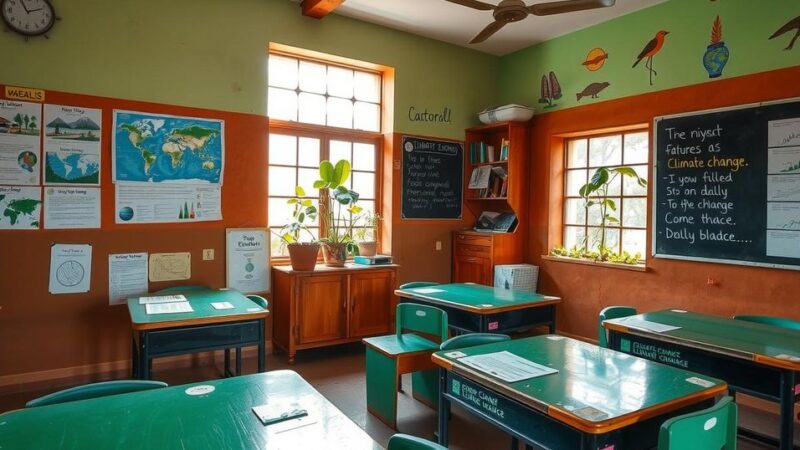Martha Gill’s article highlights the critical undervaluation of biodiversity loss in the context of the climate crisis, showcasing the insufficient attention given to COP16 compared to the upcoming COP29. The failure of numerous nations to submit biodiversity preservation plans reflects a wider neglect, risking the extinction of thousands of species. Gill argues for a revitalized focus that integrates emotional narratives of nature’s resilience alongside statistical discussions of climate change to promote urgency and inspire action.
Martha Gill articulates a pressing concern regarding the climate crisis, emphasizing that society tends to overlook the implications accompanying the loss of biodiversity. As the world anxiously awaits COP29, the climate change conference scheduled to commence on November 11, attention remains scant onCOP16, which recently concluded without significant media coverage. Alarmingly, 80% of participating nations failed to provide plans compliant with a landmark UN biodiversity accord, underscoring a troubling trend of neglect toward nature loss amidst a concentrated focus on climate change. The urgency of addressing biodiversity loss cannot be overstated. Since 1970, wildlife populations have diminished by an average of 73%, with numerous species, including the golden toad and the Pinta giant tortoise, now extinct. At COP16, it was revealed that approximately 46,000 species are currently on the brink of extinction, impacting over a third of the world’s trees. Gill notes the contrasting treatment of climate discussions versus biodiversity conversations, exemplified by the lack of substantial initiatives or public pressure concerning the latter. Historical shifts in environmental discourse have led to a predominance of focus on temperature increases rather than habitat and species preservation. This has resulted in up to eight times more media coverage devoted to climate crises compared to biodiversity issues. The interconnectedness of climate change and biodiversity is critical; climate change exacerbates extinction rates, while healthy ecosystems play an essential role in mitigating climate change through carbon absorption. Moreover, current narratives surrounding climate change tend to be abstract and numerical, lacking emotional engagement that could galvanize public sentiment and action. Gill advocates for a more emotive dialogue, emphasizing the human cost of climate change and the intrinsic value of flora and fauna in the narrative, suggesting that more public campaigns feature positive envisioning of nature’s resilience could inspire action. Ultimately, Martha Gill implores for renewed focus on biodiversity preservation as integral to combating climate change, emphasizing that neglecting it will jeopardize efforts to create a sustainable future for both humanity and the planet.
The topic of this article centers on the dual crises of climate change and biodiversity loss. With upcoming global conferences such as COP29 focusing heavily on climate change, the parallel issues surrounding biodiversity—highlighted by COP16—are often overlooked. This neglect represents a pressing concern, as numerous species are facing extinction due to various factors including habitat loss and climate change. The article draws attention to the historical shift in environmental movements favoring climate data over species preservation, leading to a disparity in public and political engagement with these critical issues.
In conclusion, it is imperative to broaden the scope of environmental discourse to encompass both climate change and biodiversity loss. The absence of significant action on biodiversity, despite the evident urgency, is a troubling trend that could undermine conservation efforts and exacerbate climate-related challenges. By fostering a narrative that balances emotional engagement with statistical data, society may better appreciate the immediate dangers posed by these crises and mobilize support for comprehensive environmental action.
Original Source: www.theguardian.com






